
Aaron Foyer
Vice President, Research and Analytics
Now what?

Aaron Foyer
Vice President, Research and Analytics
The public has been fascinated with self-driving cars ever since Michael Knight first hit KITT’s Turbo Boost in Knight Rider in the 1980s. But for most of the last four decades, recreating David Hasselhoff scenes has mostly been left to Hollywood, and not always for the best. Total Recall’s creepy animatronic taxi driver, Johnny Cab, didn’t exactly put the technology’s best foot forward.
But fast forward to 2025, and autonomous vehicles, or AVs, are here.
Flooring it: Earlier this month, Uber announced it is investing $300 million into the struggling electric vehicle maker Lucid. Under the terms of the deal, Lucid will develop a fleet of at least 20,000 self-driving vehicles for Uber over the coming years using Nuro’s autonomous technology.
This comes as Waymo emerges as a potential competitor to the ride-hailing giant. Just one year after the Alphabet-backed startup began offering fully autonomous rides in San Francisco, it passed Lyft in number of monthly rides completed in the city and looks on pace to overtake Uber sometime in 2026. Despite being available in just a few cities across the US, Waymo is now providing nearly a million paid robotaxi rides per month. A true market disruptor.
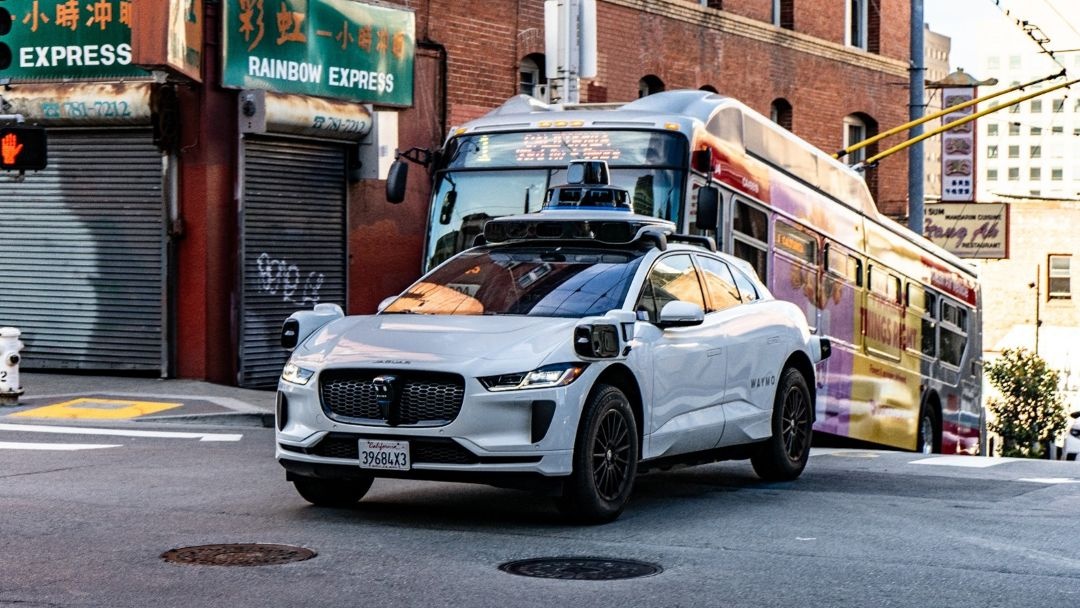
Waymo on the street of San Francisco // Wikipedia Commons
Across the pond in China, the AV program Apollo Go is not far behind, having amassed half a million rides per month last quarter.
And you can never rule out Tesla, which rolled out a fleet of robotaxis in Austin, Texas, last month, Elon Musk’s effort to capture a share of the growing $270 billion ride-hailing industry. The mercurial CEO said the company’s autonomous pursuits could be worth up to a trillion dollars.
The impact: Beyond upending millions of “so, busy night?” conversations with Uber drivers, widespread AV adoption will impact the energy industry. Not only are the vehicles electric, but the various sensors and systems all draw power from the battery, with each level of automation needing more. And data center use will be impacted, too.
So, what will the impact of autonomous vehicles be on the power sector? Let’s buckle up and find out.
This might come as a shock, but David Hasselhoff and the esteemed writers of Knight Rider over at NBC weren’t the first people to envisage cars without drivers. Back in 1925, a radio equipment company called Houdina Radio Control built a radio-controlled automobile that could be driven using a remote control that governed the car’s speed and direction. A test-drive down Broadway turned into a cautionary tale when the vehicle careened into a second car filled with photographers snapping photos of the test.
The industry has come a long way since.
Levels of autonomy: The Houdina Radio Control car was not anywhere near autonomous, but it was something. Engineers have since developed a six-level system to delineate exactly how autonomous an AV system is, ranging from zero to five, five being full Knight Rider mode.
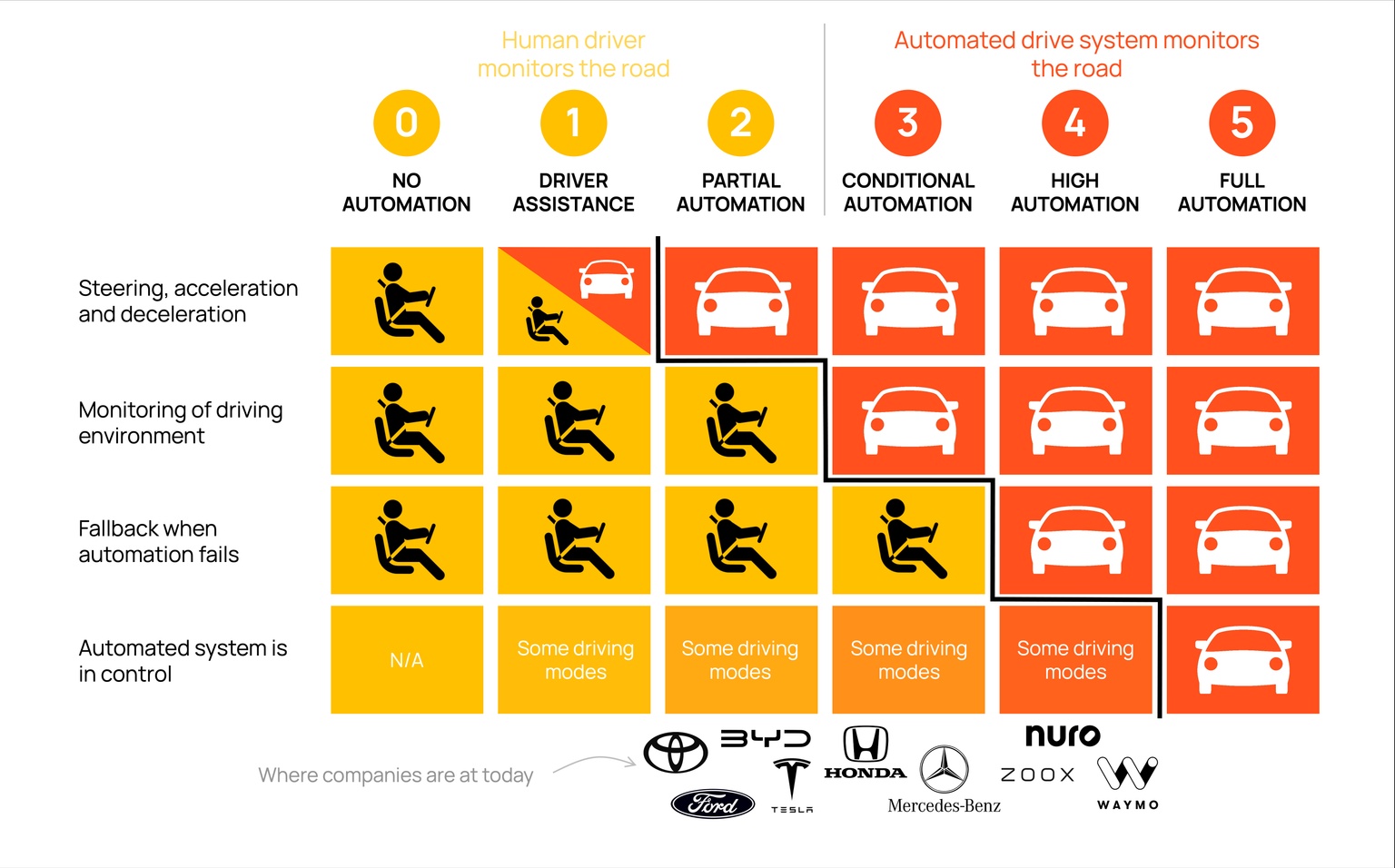
Source: Adapted from SAE International
While no company has yet achieved Level 5 automation, they are getting closer.
Of the automakers and technology companies working on AV in the West today, the two most advanced in their rollouts are Waymo and Tesla, each with their own approach.
Waymo: Using a system referred to as “sensor fusion,” Waymo’s vehicles are equipped with LiDAR, cameras and radar — LiDAR to make precise 3D maps of the environment, cameras to interpret signs and markings, and radar to see through challenging weather conditions. Its vehicles can operate only within specific zones that have been thoroughly and precisely mapped ahead of time by Waymo. The whole system could also be called “redundancy,” as it’s designed to cross-check itself and ultimately minimize accidents.
Sticking to well-mapped zones boosts safety but slows Waymo’s ability to scale quickly.
Tesla: The Austin-based company’s approach could not be more different. Fitted with only cameras and software, the Tesla engineering team believes that as human drivers rely solely on their eyes and brain, AVs should be able to, too. It’s unclear whether Tesla has replicated the “babe, we’re in a 60 zone…” passenger feedback system.
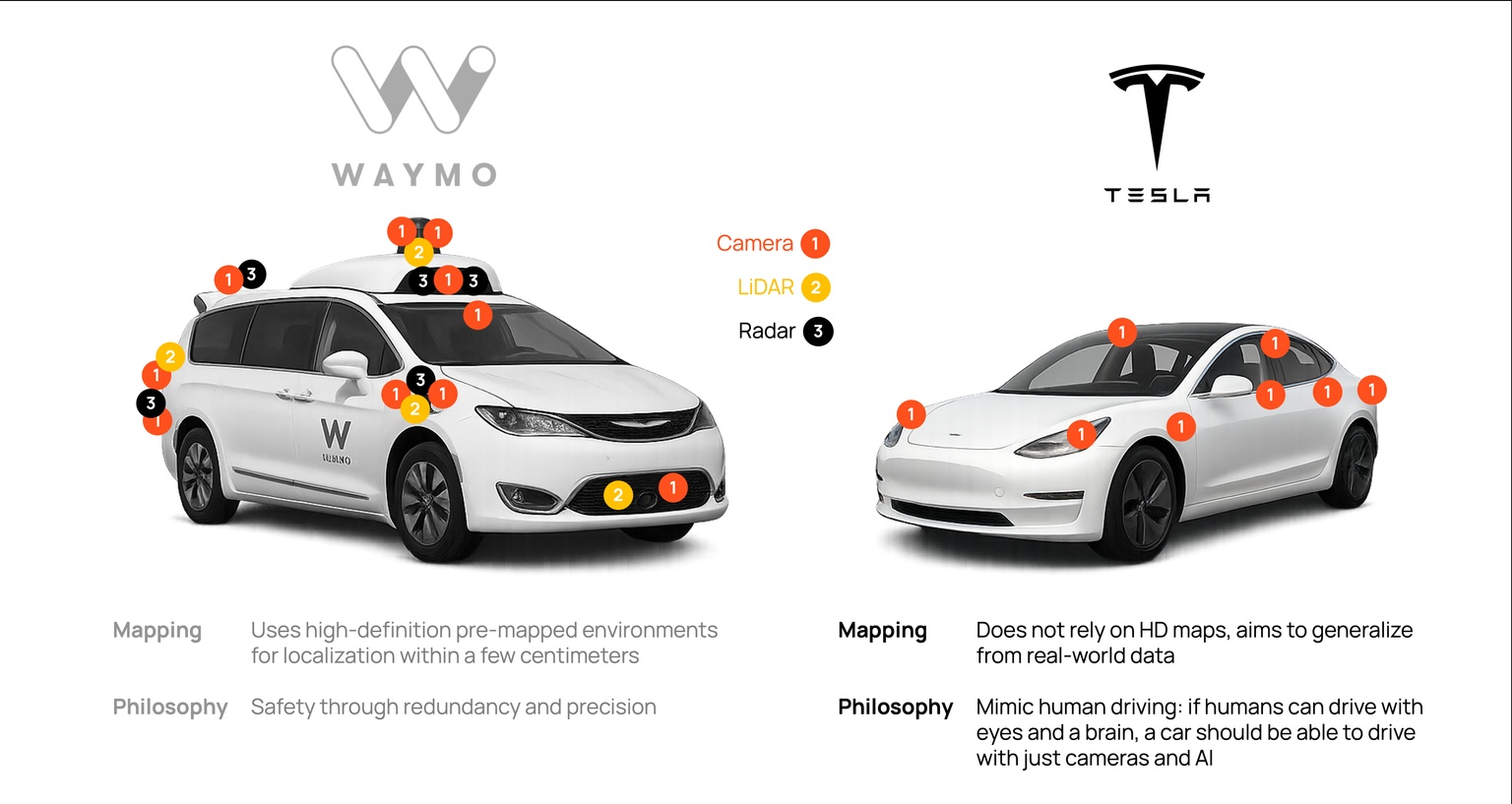
Source: Corporate disclosures
Yes, Tesla’s history of autopilot accidents is notorious, but the system is designed with the ultimate end goal of mass adoption and universal use. And the more it’s used on the road, the more tail-risk events are experienced that ultimately make the software better and rides safer.
The cost for all those sensors and cameras is somewhat offset by not having to pay a driver.
There has been no end to the speculation over how AVs could disrupt society. A decade ago, it was in vogue for endless enthusiastic tech entrepreneurs to pitch their charismatic visions of a world where individual vehicle ownership and parking congestion was supplanted by fleets of autonomous electric vehicles ferrying people around.
These visionaries lost sight of the fact that people really like owning a car for the convenience and reliability of ownership, that this would also need to work in rural areas (where ride-hailing services usually fail) and that what people really want in a car these days is the right sized cup holder for their Stanley cup.
But if autonomous driving makes electric vehicle ownership more popular, that’ll clearly have an impact on gasoline demand. As of last year, electric cars had already displaced one million barrels of daily oil demand, with the IEA expecting that to jump to 5 million by the end of the decade.
Increased power use: An underreported aspect of AVs is just how much electricity future AV systems will use.
A sixth-generation Waymo vehicle is armed with 13 cameras, four LiDAR sensors, six radar sensors and an array of external audio receivers, each pulling power from the battery. That increases the amount of electricity needed per mile of travel and that’s before the system has to think.
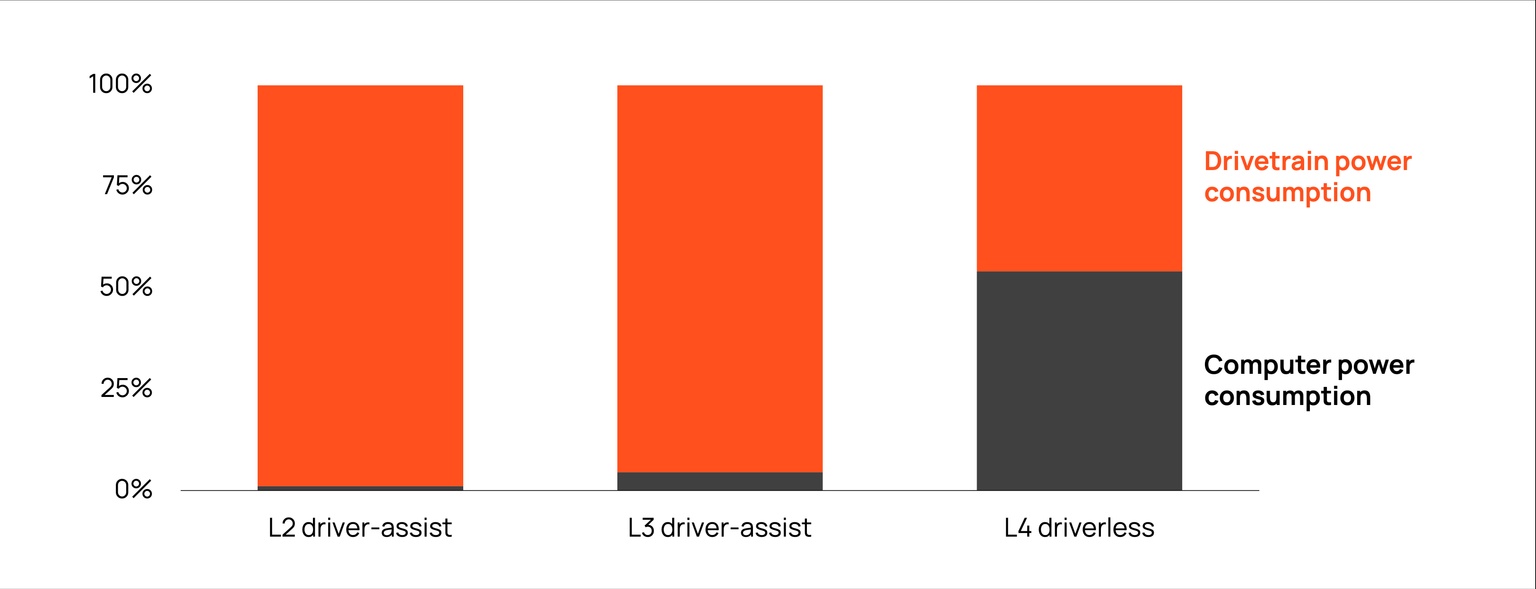
Source: BloombergNEF
Autonomous vehicles are estimated to use a staggering 300 million lines of computer code to operate. To put that in context, Lockheed Martin’s F-35 Fighter Jet runs on about 24 million lines of code and the Large Hadron Collider, the world’s largest particle accelerator, is solving the secrets of the universe with just 50 million lines of code. Level 4 autonomous vehicles use nearly 6x the code of the LHC. Maybe we don’t give enough credit to 14-year-olds with learner’s licenses.
A recent study published in IEEE Xplore found that AV sensors on a car alone reduced the vehicle’s battery range by 5% and adding compute power extended the drop to more than 12%.
Extra mileage: On top of each mile using more power, it’s expected there will be many more miles driven with high AV adoption.
For one, existing car owners are likely to put more miles on a car if it’s autonomous. This can come from so-called zero-occupancy trips, like owners sending their cars home after being dropped off at work instead of paying exorbitant downtown parking prices. And even when they are occupied, a study found drivers in California logged extra travel when the car had autopilot, especially on the weekends.
AVs also expand the total addressable market for vehicle owners. There is a wide range of folks that society is better off not having behind the wheel of a car today: Impetuous teenagers. White-knuckle retirees. Alcoholics. Not to mention entire segments of people who have the means to own a car, but for various physical, mental or medical reasons cannot. Autonomous vehicles can make communities more accessible for people who are in some way or another inhibited.
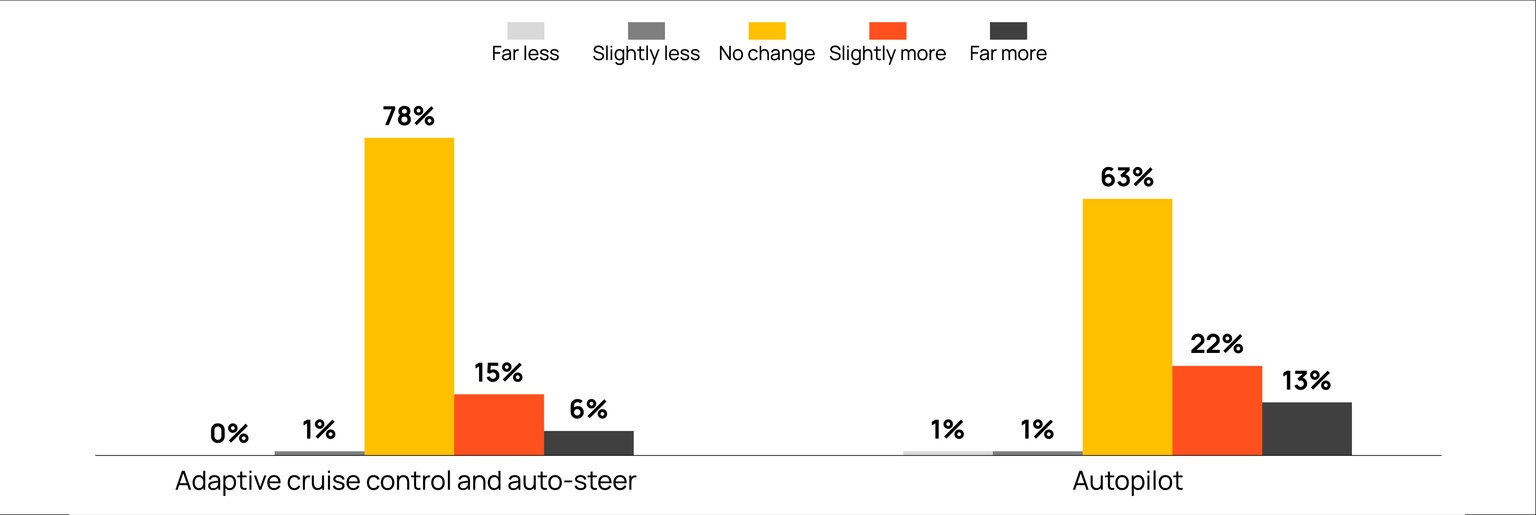
Source: The Conversation
Take the already large pool of drivers, add some extra miles to their existing habits, extend the pool of drivers even further and then make each mile more power intensive: AVs are expected to draw meaningfully more electricity than electric vehicles alone.
And then there are…
Since these cars will effectively be driven by data, the centers that house and process all that data are set play a big role in their expansion. Estimates on how much power data centers will need for AVs is sparse, but one study by MIT researchers found processing data from one billion AVs would create data center-related greenhouse gas emissions equivalent to ~1% of today’s global emissions. That implies a lot of electricity and date center use, but that’s not what you should take from this.
The real data issue with self-driving cars is memory. With each vehicle having dozens of sensors and cameras, each feeding valuable intel to the system’s mothership, AV companies will need a ton of memory to be able to handle and sort through data in an effort to improve autopilot capabilities. The Automotive Edge Computing Consortium believes each self-driving car with high levels of automation may need to offload five terabytes of data per hour of operating.
In aggregate, 400 million AVs could generate 10,000 to 15,000 zettabytes of data annually. (For those who need to Google “what is a zettabyte?” The answer: One trillion gigabytes.) In 2022, the total global internet traffic totaled just five zettabytes, or one-two-thousandth of what 400 million AVs would generate.
Data centers will play a big part in making an AV world possible.
Beyond the obvious potential benefit of turning every cab ride to the bar into pump-up Korean karaoke, there are clear societal benefits of autonomous vehicles.
Outdoor pollution is responsible for more than four million premature deaths, with transportation responsible for the majority of carbon monoxide and nitrous oxide emissions and a substantial share of particulate matter in the air. Electric vehicle adoption accelerated by autonomous features could help with traffic-related pollution. Not to mention helping to solve traffic congestion problems through improved traffic flow, avoided parking and platooning.
But AV success is not guaranteed. Google’s parent company, Alphabet, has never disclosed whether its robotaxi service is profitable. Analysts believe that each Waymo vehicle costs $150,000 due to the high-end sensors and electronics imbedded in the vehicles, which may account for why Waymo ride-hailing prices remain nearly 40% higher than Uber’s and Lyft’s in competing markets.
Bottom line: It's not just the transport industry that will be forever reshaped if autonomous vehicles take off, the energy industry will be, too. It might just need a Turbo Boost from KITT to pull it off.
Data-driven insights delivered to your inbox.